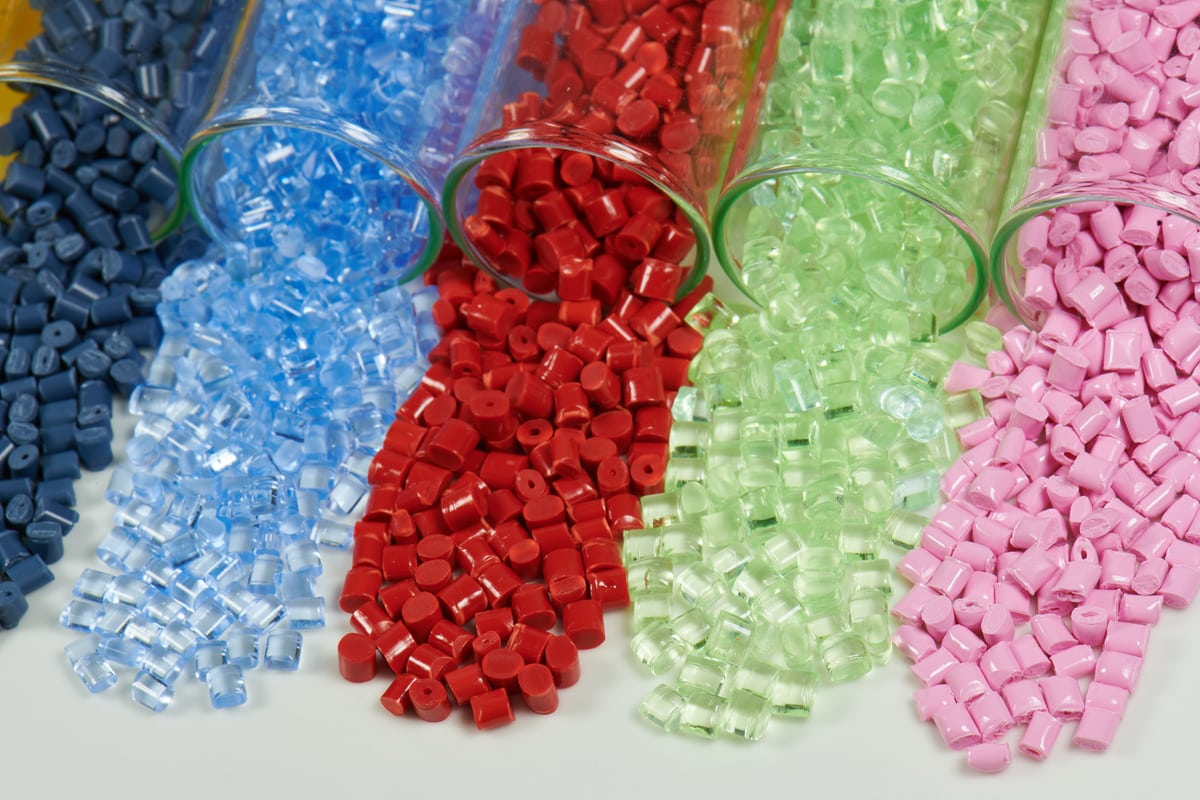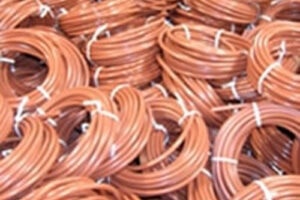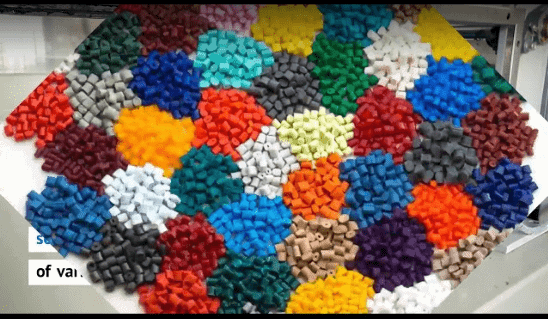Materials
Manufacturer Of Custom Plastic Extrusions, Profiles, Tubing, Rods, Shapes, FDA Certified, U.L. & NSF Approved, Class VI Radiation Sterilizable, Custom Colors, Secondary Operations.
25+ Different Thermoplastics Made To Your Exact Specifications.
Custom Plastic Extruded Color Matching & Secondary Operations Available. Scroll down for a complete list of the materials available at Inline Plastics as well as more information about our capabilities.
Thermoplastic Materials
Inline Plastics, Inc. has been a leading supplier of custom plastic extrusions for more than 75 years. We work with more than 20 different thermoplastics, using them to produce a wide variety of profiles and shapes for use in manufacturing goods, parts, and components for consumer, commercial, medical, and industrial applications.
Our thermoplastic materials include (click on a material to learn more):
- Acrylic
- Acrylonitrile Butadinene Styrene (ABS)
- Ethylene Vinyl Acetate (EVA)
- Polycarbonate
- Polyethylene (HDPE)
- Polyethylene (LDPE)
- Polypropylene (Copolymer & Homopolymer)
- Polystryene (Crystal)
- Polystryene (High-Impact)
- Polyurethane (Ester & Ether)
- Polyvinyl Chloride (Rigid PVC)
- Polyvinyl Chloride (Flexible PVC)
What Are Thermoplastics?
A thermoplastic is a plastic polymer that softens when heated, which facilitates molding and shaping operations. When it cools, the material retains the molded shape unless it is heated again past its melting point. The unique chemical properties of thermoplastic materials allow for continuous recycling and remolding without compromising their basic properties.
Common uses of thermoplastics include:
- Aircraft windows
- Agriculture
- Aquariums
- Autoclavable medical devices, medical equipment and instruments
- Auto parts (headlight lenses, body parts)
- Battery cases
- Computer cases and components
- Consumer products
- Hydroponics
- Motorcycle helmet visors
- Packaging material
- Sports equipment
- Toys (i.e. LEGO® blocks)
- Viewing ports on submersibles
Types Of Thermoplastic Materials Offered
Inline Plastics specializes in working with more than 20 different types of thermoplastic materials. Each type has specific properties that make it the best solution for meeting the unique needs of various applications.
ABS (Acrylonitrile Butadiene Styrene)
ABS plastic combines styrene and acrylonitrile to create a synthesized plastic. Its unique, non-toxic properties make it the ideal choice for consumer products that come into direct contact with human skin. ABS consists of three distinct monomers that make it strong, lightweight, flexible, versatile, and tough.
The smooth flowing consistency of ABS makes it an ideal choice for injection molding. Common products that incorporate ABS include cell phones, toys, microwaves, and other appliances.
HDPE/LDPE
Two of the most common types of plastic include high-density polyethylene (HDPE) and low-density polyethylene (LDPE). Though many of their properties are the same, each has unique characteristics and uses.
- HDPE is more rigid and durable than LDPE. It comes in variations from translucent to opaque and displays excellent chemical resistance. Applications that use HDPE include rigid packaging containers, kitchen appliances and equipment, plumbing pipes, toys, and patio furniture and structures.
- LDPE is not as rigid and comes in various clear and translucent forms. Its unique characteristics include flexibility, chemical resistance, and waterproofing. A wide variety of products come from the use of LDPE, including plastic wraps and films, flexible packaging material, injection molded parts, and grocery bags.
Rigid PVC
Polyvinyl chloride or PVC is a strong, rigid, low-cost thermoplastic with ideal fabrication and bonding qualities. PVC is easy to weld using thermoplastic welding equipment and supports adhesive and solvent bonding. Applications using rigid PVC include tanks, piping systems, and valves.
Flex PVC
Flex PVC is a variation of standard PVC that includes the addition of plasticizers to confer rubbery properties, making it softer and more flexible. Flexible PVC offer characteristics like strength, high resistance to abrasion, high clarity, good outdoor weathering, and availability in transparent and opaque forms.
There are many common applications for Flex PVC include:
- Wire/cable jackets
- Electrical cable insulation
- Pool liners
- Flooring
- Garden hoses
- Medical tubing
- Rainwear
- Inflatable products
- Imitation leather
- Signage and plumbing
Polycarbonate
Polycarbonate (PC) thermoplastics are amorphous and naturally transparent. Unique features of polycarbonate plastics include its high impact resistance and its capacity to undergo extreme plastic deformation without cracking or breaking. Its unique qualities make it an ideal solution for:
- Bullet-proof glass
- Eyewear lenses
- Medical devices
- Automotive parts
- Greenhouses
- CDs and DVDs
- Cellular phone screens
Polystyrene (Crystal & High Impact)
High-impact polystyrene is the result of modifying crystal styrene with rubber to decrease brittleness and make it more impact-resistant. It is a low-cost thermoplastic with good dimensional stability and rigidity. FDA-approved grades, flame-retardant grades, and high-gloss grades used for extrusion are all available, making this an extremely versatile plastic. It is often used to make shampoo bottles, grocery bags, and bullet-proof vests.
Polypropylene
The semi-crystalline structure of polypropylene increases its durability, making it a widely available and comparatively affordable material used to make robust products and durable goods. Polypropylene is fatigue-resistant, has high tensile strength, and features good resistances to biological factors like mold/fungus, making it an ideal solution for applications such as:
- Housewares
- Utensils
- Sportswear
- Toys
- Medical equipment
- Laboratory equipment
Acrylic
This thermoplastic polymer has glass-like optical qualities, but with greater durability and improved protective capabilities compared to actual glass. Acrylic thermoplastics are known more commonly by brand names such as Lucite®, Perspex®, and Plexiglas®. As an impact-resistant glass alternative, acrylic applications often include goggles, lenses, windows, and other common applications for standard glass.
EVA (Ethylene Vinyl Acetate)
A copolymer of ethylene and vinyl acetate, this thermoplastic polymer is a porous elastomeric material with three times the flexibility of LDPE and the highest melting temperature of all thermoplastics. EVA is non-toxic and exhibits similar properties to LDPE, but features an increased gloss that makes it well-suited for various types of films, end segments, and semi-finished goods. Common applications include:
- Foam
- Hot melt adhesives
- Wire and cable insulation
- Extrusion coating
- Solar cell encapsulation
Polyurethane (Ester & Ether)
This clear and flexible thermoplastic includes extreme versatility, abrasion resistance, and excellent wear properties. It remains highly elastic and impact-resistant at the hardest durometers and in extreme low temperatures. Polyurethanes are also highly resistant to grease and oil. Common applications for polyurethane include gaskets and shoes.
Thermoplastic Solutions From Inline Plastics
Thermoplastics provide a low-cost, recyclable material for a broad range of manufactured products used in almost every industry. Inline Plastics is a leading provider of thermoplastic materials, specializing in more than 20 different varieties of thermoplastic. Visit our thermoplastics service page for more information or request a quote for your project.
| MATERIAL | APPEARANCES | FEATURES | CAPABILITIES |
|---|---|---|---|
|
|
|
|
|
|
|
|
|
|
|
|
|
|
|
|
|
|
|
|
|
|
|
|
|
|
|
|
|
|
|
|
|
|
|
|
|
|
|
|
|
|
|
|
|
|
|
|





